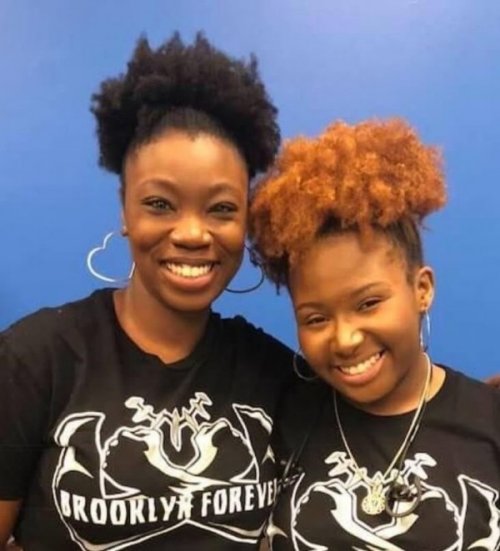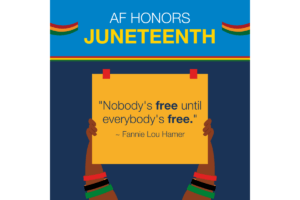Leading for Racial Equity is one of our core values, and it informs all that we do. This year, we’ve redesigned what ninth-grade humanities looks like in order to better Lead for Racial Equity at the high school level.
The Changes in Theory: Redesigning Ninth-Grade Humanities
Across our K-12 program, we are making changes that center racial equity in our curriculum, program, and instruction.
That means ensuring that our humanities curriculum contributes to positive identity development and reflects the full humanity of students of color. It means highlighting heroism, strength, and beauty. Change also means creating more opportunities for students to have more voice and agency in their learning. It means building the “learn how to learn” skills that will support independent learning.
And it means redesigning what ninth-grade humanities looks like.
As part of the redesign, we grounded all our work in the ninth-grade humanities learner profile. Over the last year, teachers and leaders built the profile based on what skills we want our students to build.
Our humanities courses—literature, composition and history—are now designed to incorporate more long term, generative student activities. They’re built for more student choice and more student voice.
At
AF Brooklyn High School, the lower school humanities team is working to bring this vision to life in the classroom.
Change In Action: A Dean’s View of Ninth-Grade Humanities
Aisha Douglas is the Humanities Dean at AF Brooklyn High School.
As educators, our job is to truly see our students as complex beings. Only then can we create schools and lessons that will give them what they need to flourish as critical thinkers. The greatest catalyst for the change in the dynamics in our classroom this year has been the opportunity for more teacher autonomy and flexibility. This year, I’ve seen our curriculum transform the way we approach our lessons. We authentically respond to students' needs and interests.
Our ninth-graders have had the opportunity to show their learning in a variety of ways. This has been especially important this year because the transition to ninth grade is academically challenging under normal circumstances. Making this transition during a pandemic as a remote learner presents a new, unique set of challenges. This required us to really rethink the way we approach building strong writers. We made the decision to first focus on creating spaces where students could master how to develop and present their ideas.
We’re not afraid to use different approaches because they all show us their learning in different ways.
We are not locked into, “you must write one essay every week.” Our students are working on strengthening their skills to write essays. And, our students have other options.
They can make podcasts or do video reviews. Right now, for example, some of our students are creating social media profiles focusing on characterization and symbolism. It’s been exciting to play around with different platforms and see the depth of thought and creativity we get back from our students.
They can first collect and explore their thoughts without the boundaries of formal writing. In turn, their writing can become more sophisticated because they’ve had the chance to grow their thinking.
There’s also so much more listening this year. We have created spaces for more student voice in the conversations. We let students make decisions about the direction we take. The biggest shift in our classrooms, and the one that has had the greatest impact, is just letting students have more open discussion and input.
The most amazing ideas come out by accident.
We have allowed our students open dialogue that allows them to build on each other’s ideas and take their thinking in new directions. As a result, they see and believe in the validity of their ideas. Our seminar teacher, Georgia Savage, took that to a new level. She entered students' writing into a competition sponsored by Scholastic and a number of our students received awards and recognition.
We have also done a lot of thinking and revision around the topics we put in front of our students, the tasks we ask them to engage with, and the articles we read. Our curriculum cannot and will not center around the suffering of people of color. Instead, we must be focused on affirming student identity, interrogating racism, and exploring social responsibility. Our kids must explore new issues and have new conversations. And our curriculum must allow them that opportunity.
As we have redesigned what ninth-grade humanities looks like, our students have more opportunity to engage and expand. We recently did a unit on food deserts. In the past, that could focus on the deficits in a community. It’s easy to look around and say, “OK, in this neighborhood there are 10 McDonalds closer than a grocery store.” But we went beyond that. We looked at food waste and did larger mapping looking at food inequity across a much wider area. It really allowed our kids to look at the larger picture.
They are fired up about what they are learning and motivated to research and respond to the information they are gathering. They are developing distinct voices and passion.
We are constantly asking ourselves, “What are the things students need to engage with to be powerful, responsive, multi-faceted citizens of the world?” And every day we’re working to provide that.
Be sure to follow us on
Instagram to keep up with our updates.



